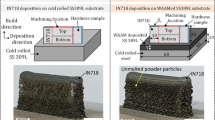Abstract
This paper introduces and describes the development and application of methodologies for the formulation of novel sustainable neat-oil metal removal fluids. A further paper will describe the methodologies being employed and the results of the performance benchmarking of the final fluid formulations for stainless steel and aerospace-grade titanium alloy materials. In this paper, a stepwise approach to the development of novel sustainable neat-oil metal removal formulations is described with a detailed discussion and analysis of the approach taken and the methodologies developed and applied. Two target applications were identified for cutting stainless steel and aerospace-grade titanium alloys. The key required properties of the fluids for these applications were combined with targets identified for cost, low temperature properties, kinetic viscosity (KV) and oxidative stability. Samples of base oils were obtained and characterised. The oils ranged from commodity commercial and specialist natural vegetable oils to chemically modified vegetable-oil-derived fatty acid esters and polyols. The selected oils were used to create blends which were screened for their key properties. From this work, four blends of base oils were identified for being taken forwards to the formulation screening stage. These blends represented a range of natural and modified oils blended in such a way as to achieve all of the required key properties of cost, KV, melt/pour points and oxidative stability. To determine if the oils were likely to also perform well as metal cutting fluids, they were subjected to a range of tests with and without the addition of certain additives, and their performances were benchmarked against a range of mineral oil and polyol-ester-based commercial fluids currently supplied to the target applications areas. The tests employed were: SRV, microtap and oxidation stability. The issues involved in the extrapolation of results from tribological testing to the prediction of fluid cutting performance are highlighted and discussed. From this work, one base oil blend for each of the two target applications was identified and the best performing mineral and polyol ester benchmark fluids were selected. Full-scale drilling and rigid torque tapping tests were used to refine formulations and to screen other additives identified in parallel microtap tests. The durability, oxidation stability, machine tool compatibility and misting potentials of the final formulations were also benchmarked using a range of standard and novel methodologies—this work will be described in a later paper.
Similar content being viewed by others
References
Envirowise (1992) Cost effective treatment of waste oily water, CS92
Europalub (1995) Europalub statistics
The European Parliament and Council of the European Union (2000) Waste incineration directive, 2000/76/EC
Honary LAT (2001) Biodegradable/biobased lubricants and greases. Available online at http://www.oilmaintenance.com/ml/200109/biodegradable.asp, University of Northern Iowa, Iowa
Wagner H, Luther R, Mang T (2001) Lubricant base fluids based on renewable raw materials—their catalytic manufacture and modification. Appl Catal A: Gen 221(1–2):429–442
Anon (1997) European lubricants market. Europalub
Bennett EO (1983) Water based cutting fluids and human health. Tribol Int, pp 45–60
HSE (1991) Health surveillance of occupational skin diseases, MS24. HSE Books, London
HSE (1991) Medical aspects of occupational asthma, MS25. HSE Books, London
HSE (1994) Health risks from metalworking fluids—aspects of good machine design, IND(G) 167L. HSE Books, London
HSE (2000) Metal working fluids (MWF) exposure assessment, EH74/4. HSE Books, London
Korde VM, Phelps TJ, Bienkowski PR, White DC (1993) Biodegradation of chlorinated aliphatics and aromatic compounds in total-recycle expanded-bed biofilm reactors. Appl Biochem Biotechnol 39/40:631–641
Raynor PC, Cooper S, Leith D (1997) Evaporation of polydisperse multicomponent oil droplets. Am Ind Hyg Assoc J 57(12):1128–1136
Thorne JL, Kishino H, Felsenstein J (1993) Inching toward reality: an improved likelihood model of sequence evolution. J Mol Evol 34(1):3–16
Abdalla H (2005) Sustainable metalworking fluids technology for a greener environment. International Conference on Industrial Engineering and Systems Management-IESM’05. Morocco, pp 16–19
Belluco W (2000) Performance testing of cutting fluids. PhD thesis, Technical University of Denmark, Denmark
de Chiffre L, Bellucco W (2000) Comparison of methods for cutting fluid performance testing. Annals CIRP 49(1):57–60
Acknowledgements
This study is part of a LINK project funded by the Engineering and Physical Sciences Research Council (EPSRC) and the Department of Trade and Industry (DTI), within the Sustainable Technology Initiative (STI). The project was carried out by a consortium composed of a number of leading edge organisations, namely: CAV Aerospace Ltd., De Montfort University, G-Mach Engineering Services Ltd., Rhein Chemie BU Lanxess Ltd., Houghton Plc., Kuwait Petroleum International Lubricants (UK) Ltd., Pera, Polartech Ltd., Smart Technology Ltd., SPS Technologies Ltd. and Cargill. We would also like to acknowledge the contribution of Professor M. Fox, Mr. Perry Guess and Kistler Instruments Ltd., Alresford House, Alton, Hampshire.
Author information
Authors and Affiliations
Corresponding author
Rights and permissions
About this article
Cite this article
Abdalla, H.S., Baines, W., McIntyre, G. et al. Development of novel sustainable neat-oil metal working fluids for stainless steel and titanium alloy machining. Part 1. Formulation development. Int J Adv Manuf Technol 34, 21–33 (2007). https://doi.org/10.1007/s00170-006-0585-4
Received:
Accepted:
Published:
Issue Date:
DOI: https://doi.org/10.1007/s00170-006-0585-4




